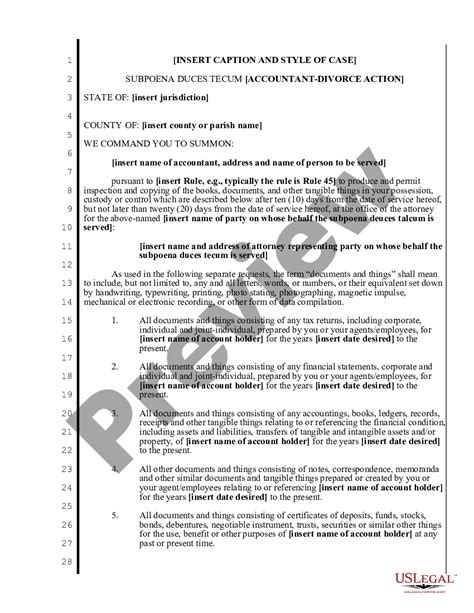How To Subpoena Employment Records
Ronan Farrow
Mar 26, 2025 · 3 min read

Table of Contents
How to Subpoena Employment Records: A Step-by-Step Guide
Obtaining employment records often requires a legal process, particularly when dealing with a resistant employer. This guide will walk you through the steps involved in subpoenaing employment records, emphasizing the importance of legal counsel and adherence to the law. Remember, this information is for educational purposes only and does not constitute legal advice. Always consult with an attorney for guidance specific to your situation.
Understanding the Legal Basis for a Subpoena
A subpoena is a legal document that compels an individual or entity to produce specific documents or testimony. To successfully subpoena employment records, you need a legitimate legal reason. This often arises in the context of:
- Litigation: Employment records are frequently crucial in lawsuits involving wrongful termination, discrimination, wage disputes, or other employment-related claims.
- Investigations: Government agencies or private investigators may subpoena records as part of a formal investigation.
- Legal Discovery: In the discovery phase of a lawsuit, both sides can request relevant documents, including employment records, from the opposing party.
Steps to Obtaining a Subpoena for Employment Records
The process of obtaining a subpoena varies by jurisdiction (state or federal). However, the general steps are typically as follows:
1. Consult with an Attorney
This is crucial. An attorney can advise you on the legality of your request, the best approach to obtaining the records, and the specific procedures required in your jurisdiction. They will help you navigate the complexities of legal procedure and ensure your subpoena is properly drafted and served.
2. Filing the Necessary Documents with the Court
Your attorney will prepare the necessary paperwork for the court, including the subpoena itself and any supporting documentation outlining the reasons for the request. This will often involve a formal request to the court, explaining why the records are necessary. The specific requirements for these filings vary significantly depending on your location and the type of case.
3. Serving the Subpoena
The subpoena must be properly served on the employer. This usually means delivering the document to the appropriate person within the organization – often a designated representative or the company's legal department. The rules governing service are strictly defined and must be followed precisely to ensure the subpoena is legally valid. Incorrect service can invalidate the subpoena.
4. Employer's Response
The employer has a specific timeframe (defined by the court) to respond to the subpoena. They may comply and produce the requested records or they may object. If the employer objects, your attorney will need to address their concerns and potentially argue before the court. Possible objections include claims of privilege or that the records are irrelevant to the case.
5. Enforcement
If the employer fails to comply with a properly served and valid subpoena, you can petition the court to enforce it. This can result in penalties for the non-compliant party. Again, legal representation is essential at this stage.
Types of Employment Records Commonly Subpoenaed
Subpoenas for employment records often request information such as:
- Employment applications: Including details on qualifications and experience.
- Performance reviews: Assessing employee performance over time.
- Payroll records: Verifying wages, hours worked, and benefits.
- Disciplinary records: Detailing any disciplinary actions taken against the employee.
- Attendance records: Documenting employee attendance and any absences.
- Training records: Showing employee participation in training programs.
- Communications: Emails, letters, and other communications related to employment.
Protecting Your Rights
Remember, obtaining employment records through a subpoena is a formal legal process with specific rules and procedures. Failing to follow these procedures correctly can render the subpoena invalid. Always seek legal counsel to ensure you are complying with all applicable laws and protecting your rights throughout the process. Do not attempt this process without legal assistance.
Featured Posts
Also read the following articles
| Article Title | Date |
|---|---|
| How To Write The Uva Supplemental Essays | Mar 26, 2025 |
| How To Wire An Electric Choke | Mar 26, 2025 |
| Lost Thc Thc6000 How To Use | Mar 26, 2025 |
| How To Unlock Trailer Hitch Lock | Mar 26, 2025 |
| How To Soften A Stiff Leather Jacket | Mar 26, 2025 |
Latest Posts
Thank you for visiting our website which covers about How To Subpoena Employment Records . We hope the information provided has been useful to you. Feel free to contact us if you have any questions or need further assistance. See you next time and don't miss to bookmark.
